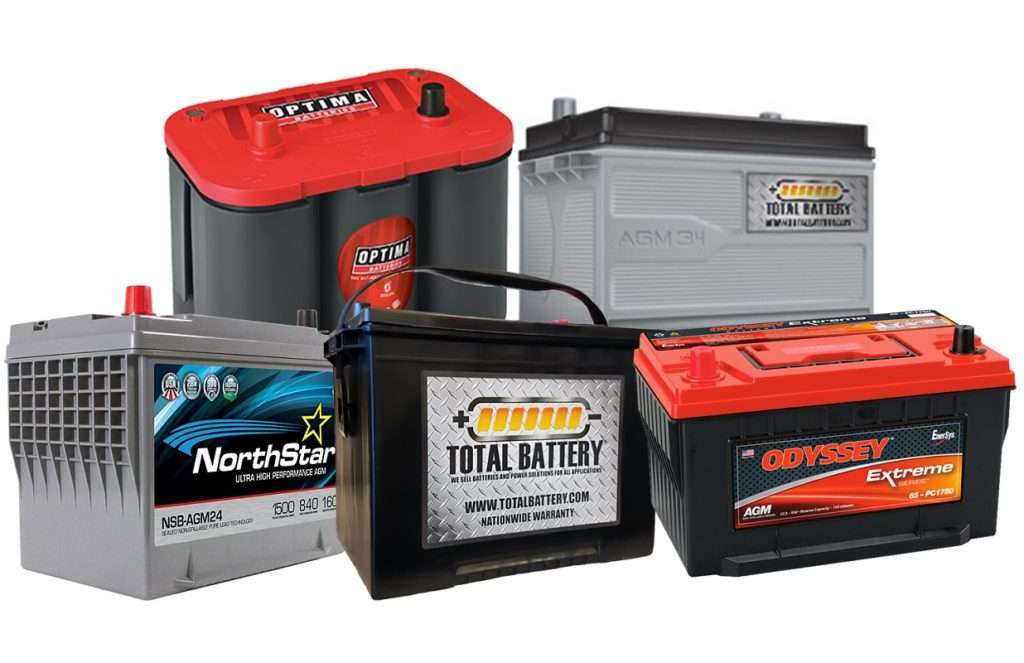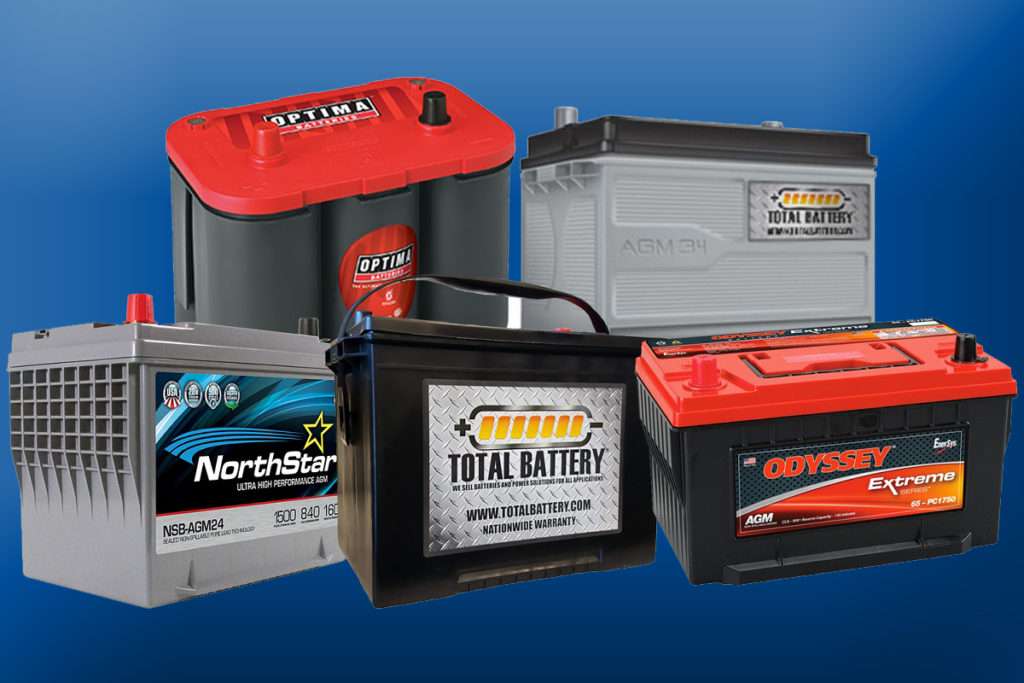There are many kinds of lead-acid batteries that come in different shapes, designs, and sizes. They are colossally well known on the grounds that they are robust and rechargeable.
The majority of them require little maintenance and can serve you for quite a while with legitimate consideration. In the part below, we will check out various sorts of batteries and their advantages and disadvantages.
Beginning Lighting and Ignition (SLI)
SLI batteries are intended to crank engines with high power going on briefly. They use electrode plates strengthened with either lead calcium (fixed arrangement) or lead-antimony (flooded setup). Not at all like deep cycle batteries, they have many thin plates running parallel.
This empowers them to accomplish a low resistance with a high surface region. Contrasted with different kinds of lead-acid batteries, they have high charge and discharge rates.
Normal automotive batteries are intended to be charged when ignition starts and lose charge once the vehicle starts. 2-5% of the charge is supplanted by the vehicle’s alternator. Frequently, they shouldn’t be discharged below half profundity.
Releasing them below this level will ultimately damage the plates and shorten the battery’s duration. A normal beginning battery has a lifespan of between 3 to a year.
For the most part, SLI batteries have a decent operational life in shallow-cycle conditions yet a bleak lifetime under deep cycling. Since they are not improved for renewable energy systems, they are not suggested for use in a PV framework.
Most starter batteries are evaluated with RS or Ah which demonstrates their energy storage capability. They additionally have CCA (cold cranking amps) which means how much current they can deliver at cold temperatures.
SLI batteries are typically utilized in automotive applications to begin cars and boats. Inferable from their size, they can convey tremendous explosions of current for a brief time frame than deep-cycle batteries.
Pros
- Sensibly estimated
- Low interior resistance
- Excellent heartbeat discharge abilities
Cons
- Restricted charge rate
- Performs ineffectively in deep applications
Deep Cycle
Deep cycle batteries are essentially intended to discharge a large portion of their ability (as much as 80%). This allows them to keep a cycle life of thousand cycles. Not at all like beginning batteries, they convey short yet immense explosions of flows.
At some random time, they discharge between 45-75% of their charge limit. The discharge shifts start with one producer and then onto the next. While most batteries can be cycled to 20%, the suggested cycle ought to be no less than half.
What makes them not quite the same as different sorts of lead-acid batteries is that they have thicker and more strong lead plates. This gives them a little surface region and less moment power than beginning batteries.
The thick and solid plates additionally keep them from twisting because of unnecessary intensity while charging. Commonplace of deep cycle batteries, they likewise have lower cranking amps contrasted with typical beginning batteries.
And keeping in mind that they can be cycled down up to 20% charge it’s suggested that clients keep the normal at half discharge. Most L-16 sort deep cycle batteries have a life range of 4-8 years.
You can drag out the life of deep-cycle lead-acid batteries in an assortment of ways including proactively preventing corrosion and keeping them at an ideal temperature.
Since they convey a lower yet consistent explosion of power for a significant stretch, deep-cycle batteries are broadly used to power marine applications, for example, boats, forklift trucks, and golf buggies.
They are likewise regularly utilized in power adornments, for example, winches and savaging engines which should be completely discharged prior to charging. When utilized for automotive applications, they should be larger than usual to make up for their lower ability to convey current.
Pros
- Double reason
- Keep going for a huge number of cycles
Cons
- Lower cranking amps
Fixed Batteries/VRLA
Fixed lead-acid (SLA) batteries contain absorbent microfibre glass mats that different plates. The glass matt is intended to immobilize electrolytes. In spite of the fact that they are alluded to as fixed, they contain vents that let out gas during charging. Normal batteries produce six volts that give delayed cycling administration.
Very much like a wide range of lead-acid batteries, VRLA batteries discharge hydrogen from the negative plate and oxygen from the positive terminal while charging.
They are fitted with pressure relief valves which open when the pressure from hydrogen gas starts developing. The valve activity allows the gas to get away and thus decreases the limit of the battery.
While utilizing fixed batteries, legitimate consideration ought to be taken to forestall fast charging and short circuits. The most ideal way to charge them productively is to utilize consistent voltage However, you can in any case drift charge them at 2.35 volts at room temperature.
SLA batteries are utilized to power various consumer products and power tools. You’re bound to see these batteries powering electric drills and electric starters for youngsters’ toys. Furthermore, they are regularly utilized in deep discharge applications where they power electric vehicles, golf cars, bikes, and sailboats.
Battery Troubleshooting: How to Fix Car Battery?
Then again, valve-managed lead-acid batteries accompany pressure valves that deliver gas when it moves toward outrageous levels. Their electrolyte configuration diminishes gassing and obstructs oxygen and hydrogen discharge into the environment.
Pros
- Charges a lot quicker
- Higher execution under the weighty burden
- Spill/release free
- Turns out great in cool conditions
- Vents less gas
Cons
- High-self discharge rate
- Long charging hours
Vented Batteries/Wet Cell
Vented cell batteries are probably the most seasoned kind of lead-acid batteries. They are alluded to as wet cells since they produce current utilizing the chemical reactions among electrodes and the liquid electrolyte. These batteries are accessible in two designs; serviceable and maintenance-free. Most of these batteries utilize flooded cell technology.
Furthermore, other lead batteries, have lead plates which are drenched in a destructive electrolyte arrangement. These batteries accompany valves that deliver pressure to forestall gas development which could break the cell case. What makes them alluring is that they are lighter in weight contrasted with AGM batteries and less inclined to damage through overcharging.
Wet cell batteries have two sorts of plates; anodes and cathodes. Anodes are connected to the negative terminal of the battery while the cathode is to the positive terminal.
Since they contain liquid electrolytes in unsealed containers, they should be kept in an upright position in a well-ventilated room. Wet cell batteries require routine observing and finishing off with refined water.
Wet cell batteries are utilized in different applications, for example, electric tools, cellphone towers, and aviation.
Professionals
- Sensibly valued
- Simple to investigate
- Excellent heartbeat discharge capacities
Cons
- Restricted charge rate
- Require ordinary garnish
- Performs inadequately in deep applications


